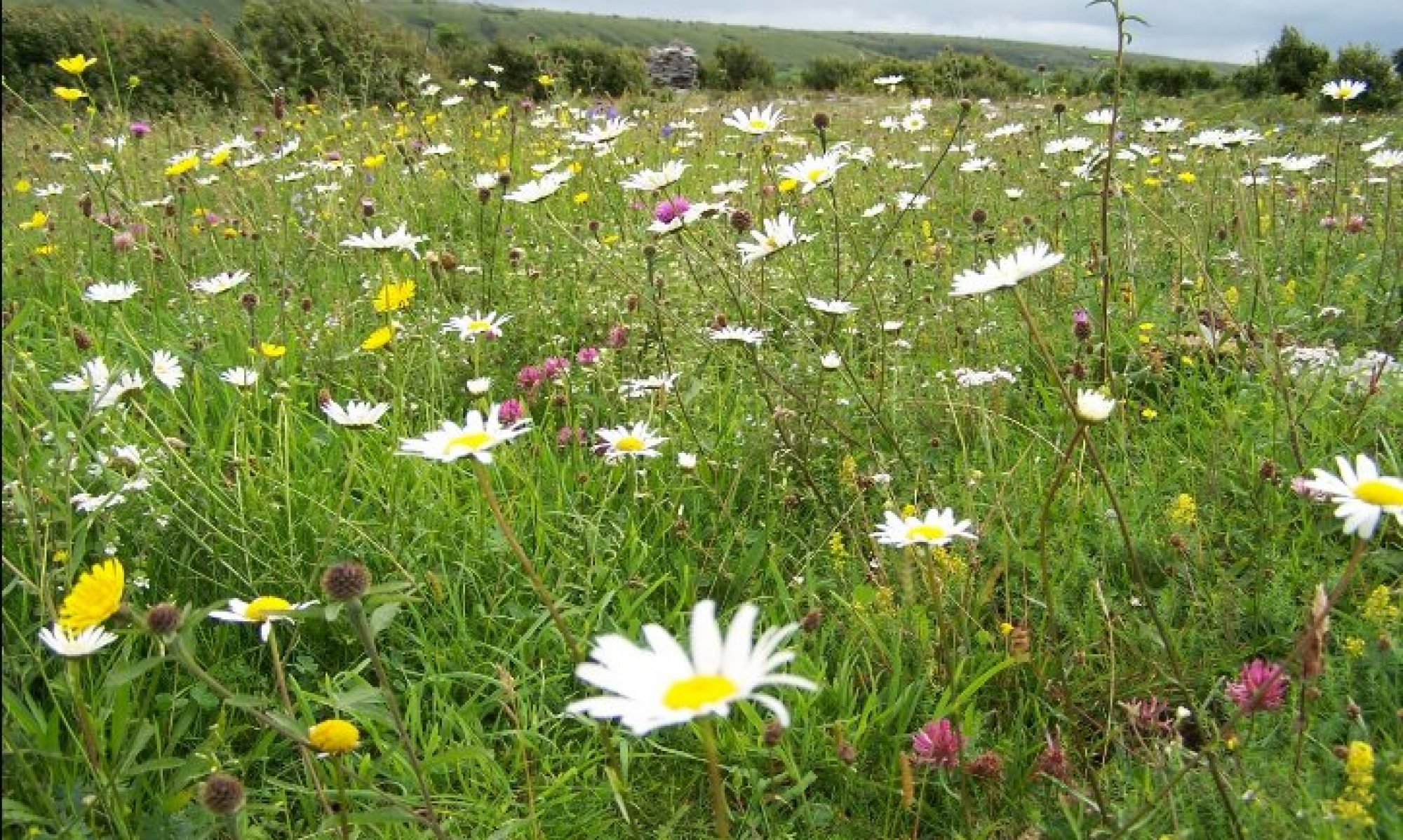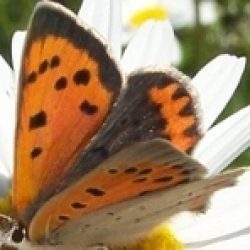July 2025 has provided much warmer and sunnier weather than its two predecessors, allowing our butterflies to thrive without being harmed by wet, cold conditions that damage populations. The butterflies flying in early July are still on the wing but are becoming faded. The following article, looking at mid-July butterflies, is based on reports submitted to our 2025 Record page.
A star of the Irish, English and European woods is the magnificent Silver-washed Fritillary. Only one of the 45 fritillaries that occur in Europe is larger, and none have the graceful flight and astonishing courtship ritual that gives this characterful butterfly its popularity among butterfly lovers.
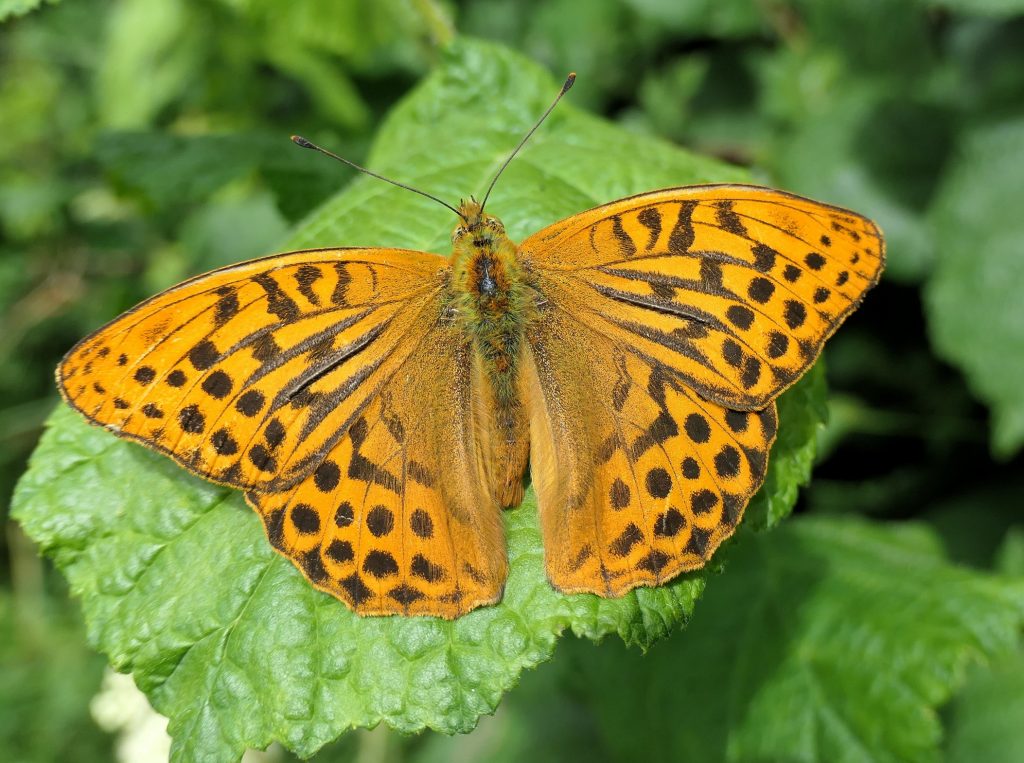
It breeds within woods and mature scrub, but it is often met in clearings and wood edges containing flowers, especially Bramble. The distribution map in An Atlas of the Butterflies in Ireland 2010-2021 shows an increase in recorded 10 km squares from 248 squares before 2010 to 422 squares in 2021, suggesting that it is thriving in Ireland. It does not occur within typical commercial coniferous plantations or woods or parts of woods containing mainly non-native trees like Sycamore and Beech. It needs well-lit woods on wet and drier soils containing Common Dog-violet among dry plant litter for the caterpillar and nectar for the adult, especially Bramble and Creeping Thistle. Counties that contain the highest number of recorded squares per area are Wicklow, Kildare and Wexford in Leinster, Fermanagh in Ulster, Clare and Cork in Munster and Galway in Connaught (Harding et al., 2025).
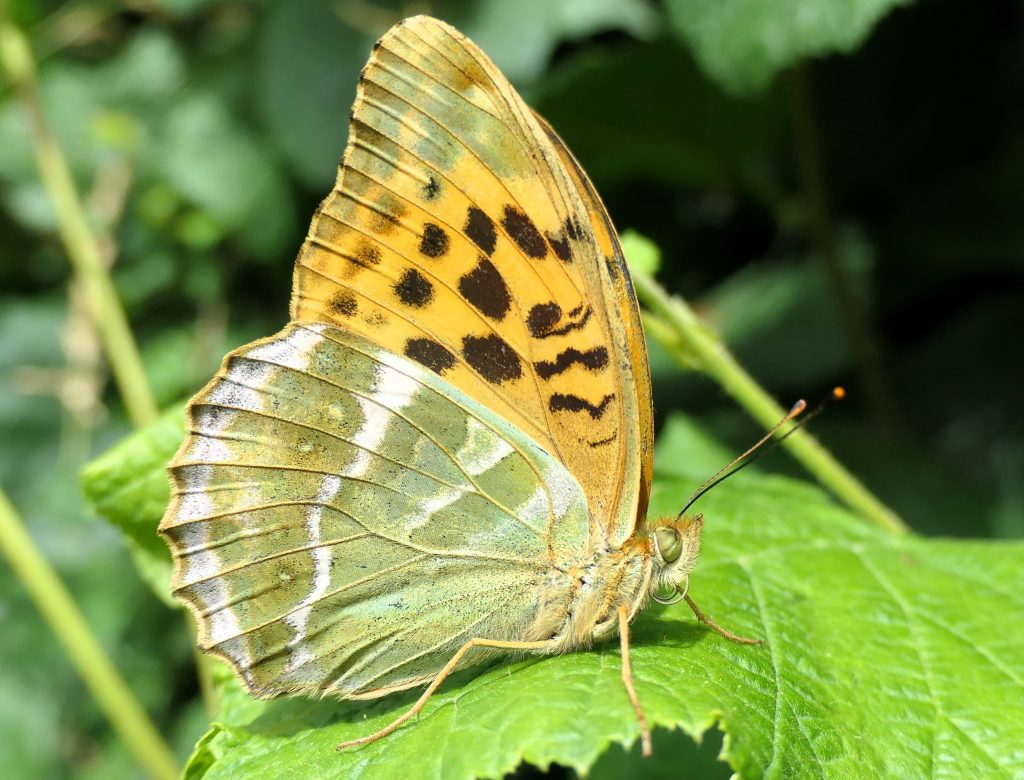
A fellow woodland denizen, but much scarcer and more elusive than the Silver-washed Fritillary, is skulking in some of our oak woods now. The Purple Hairstreak is strictly arboreal, loftily ensconced in foliage sprays of Sessile and Pedunculate Oaks, but it is not well distributed. Its caterpillar and adult feed on oaks, so it is fully reliant on oak woods. Oak woodland, especially lowland oak woodland, is rare in Ireland. The butterfly occurs in two of Dublin’s parks, St. Catherine’s Park, Lucan, and Phoenix Park, near Castleknock and in woodland on a farm in Lucan. Unsurprisingly, Wicklow holds populations along with Carlow and Wexford. Elsewhere, Fermanagh, Derry, Galway, Clare, Laois, Tipperary, Kilkenny, Waterford, Kerry and Cork have populations, while in Sligo, Roscommon, Mayo and Limerick it is recorded from just a single 10 km square. There are no records for the remaining counties in Ireland in the recent Atlas maps (Harding et al., 2025).
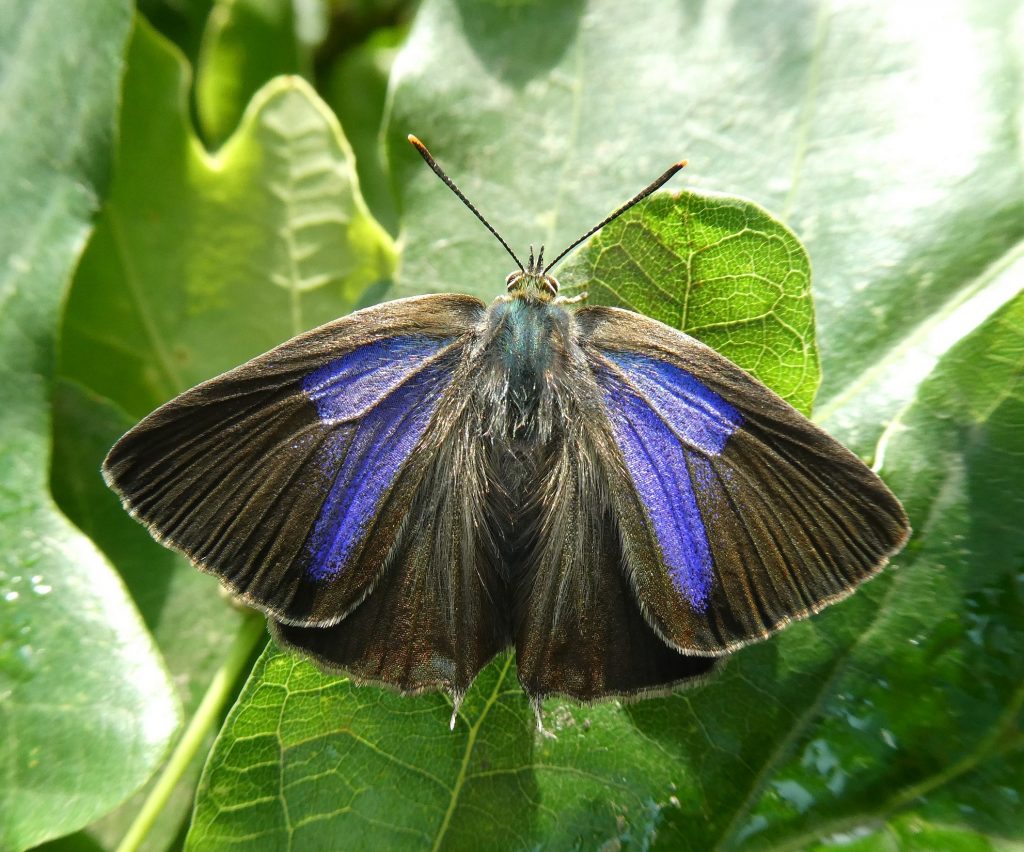
Another woodland species, but one that loves gardens, especially in suburban and urban areas with mature shrubs and trees, is the highly successful Holly Blue. This diminutive, gleaming garden gem is now just beginning to hatch its second generation. Flashes of violet, somewhat metallic blue, are frequent in sunshine in our wooded parks and gardens, hedges, and woodland, but close views are rarely afforded to us in warm, sunny weather. Let the sun be obscured by cloud, and this shining jewel settles into the foliage, vanishing despite its pale, greyish-blue undersides. The Holly Blue is busy contradicting its name in summer by breeding on Common Ivy. It is the Holly Blue in spring, the ‘Ivy Blue’ during summer and autumn. Seasonal dimorphism is evident in the female, with the summer female showing an extended black forewing apex.
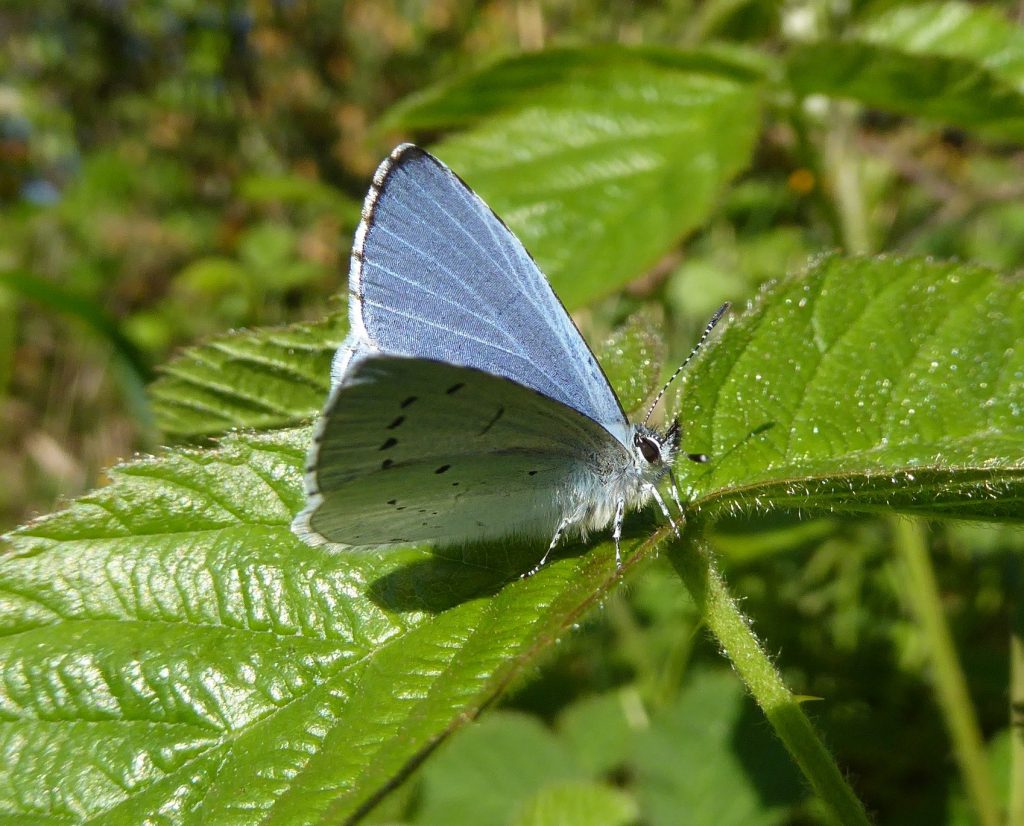
We are staying in sylvan haunts for our next species, continuing with our second-brood theme and a new seasonal look. The summer season’s model is quite dowdy. The spring hatch of the Speckled Wood has deep chocolate upper surfaces spangled with large, rich cream spots. The summer edition is often paler brown with paler, smaller, less vivid spots. The summer males behave differently from their dads, showing a tendency to patrol their territory at a greater pace, creating the appearance of far greater aggression. The seasonal difference is attributable to increased temperatures. Cooler spring weather dictates greater time spent perching over patrolling. The ladies behave differently, too. Spring females lay their eggs in warm areas bathed in sunshine. In hot summer weather, shaded, more humid sites are favoured.
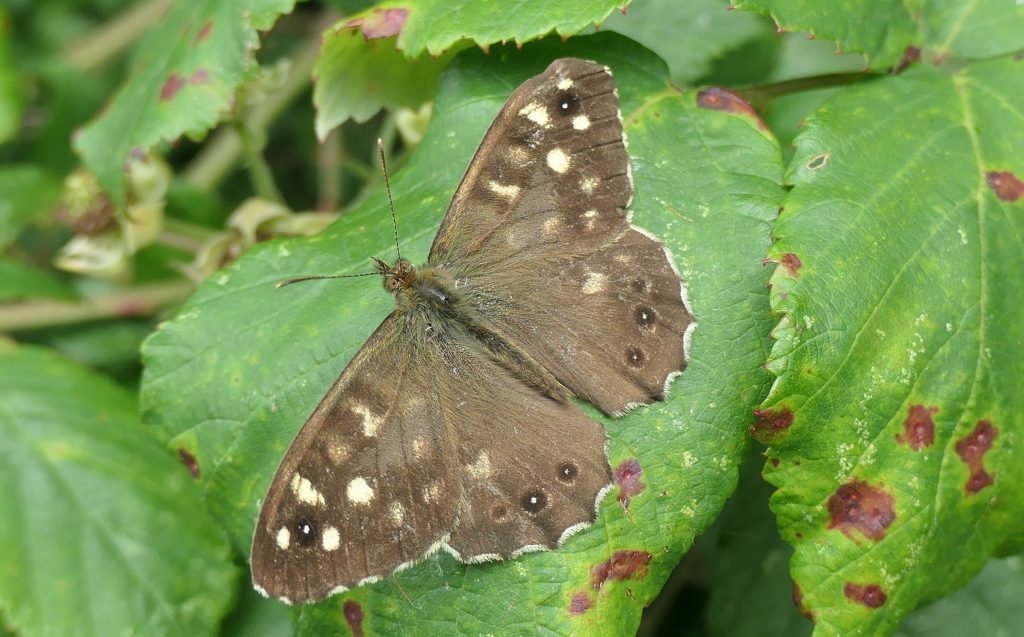
We are not leaving the woods, but our next butterfly likes more open habitats too. There are plenty of splendid scarlet-on-velvet black migrant Red Admirals on the go now. Many are females, laying frantically, suggesting a pent-up ovipositing urge unleashed following their arrival from overseas. Most of the Red Admirals have been extremely wary and almost impossible to approach closely. Speculating on reasons for their skittish demeanour, I have seen Painted Ladies behave in a similarly unsettled manner when arriving in an area, but they disappeared when I checked them the following day. Migrants will feed and possibly lay a few eggs in an area and move on, continuing their journey until they eventually settle in a district. Butterflies that have recently emerged can also be unsettled and highly wary.
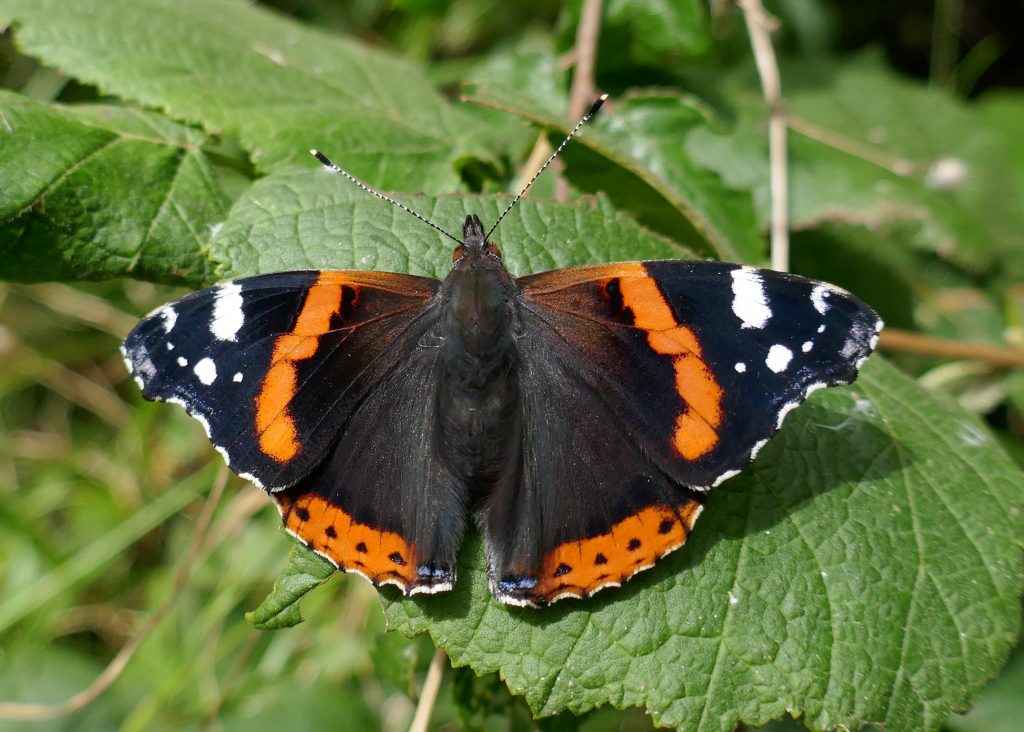
The Large White is having a good summer, with records arriving from across the country. This widespread butterfly is a generalist and can turn up almost anywhere, but avoids intact bogland. This butterfly has declined greatly in abundance, with a 74% decline during the period 2008-2024. However, this might be improving; during 2015-2024, the abundance trend shows a 31% decline (Judge & Lysaght, 2025). This shouldn’t create confidence; taking a trend from a downward shifting baseline can obscure the extent of a decline. Grow brassicas and Garden Nasturtium Tropaeolum majus for this handsome, elegant butterfly.
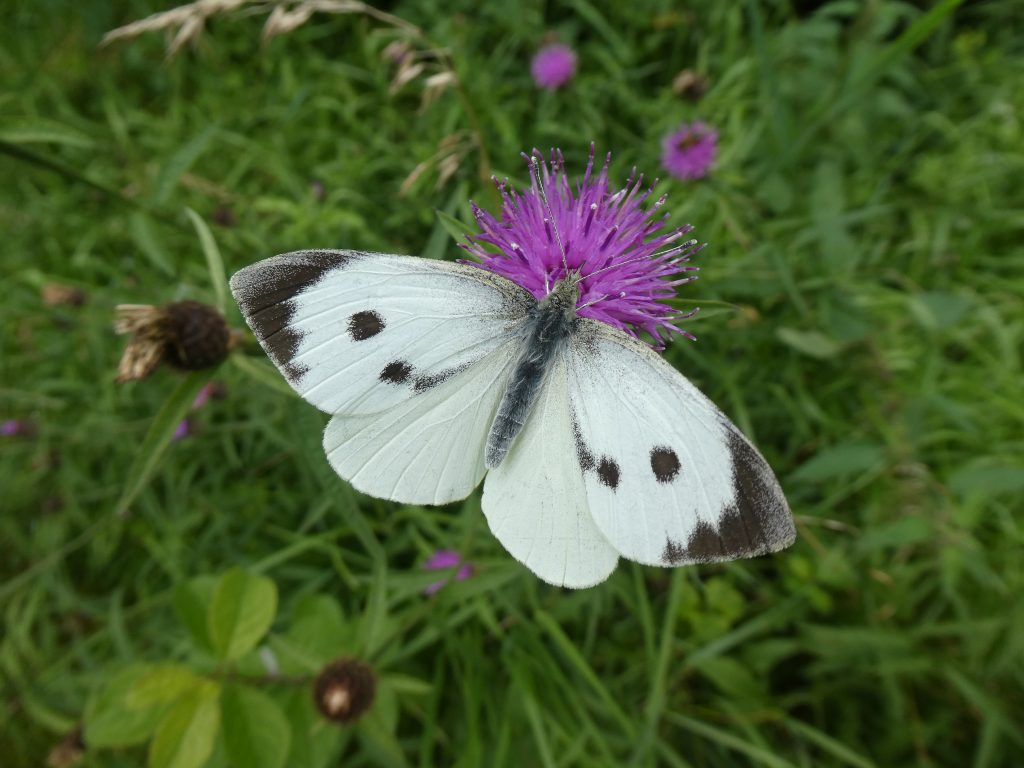
One of the world’s most stunning, multi-coloured butterflies is widespread in Ireland, and its population is stable. It is beginning to appear now and first turned up in my garden yesterday (July 16th). Is anyone ever blasé about seeing a Peacock?
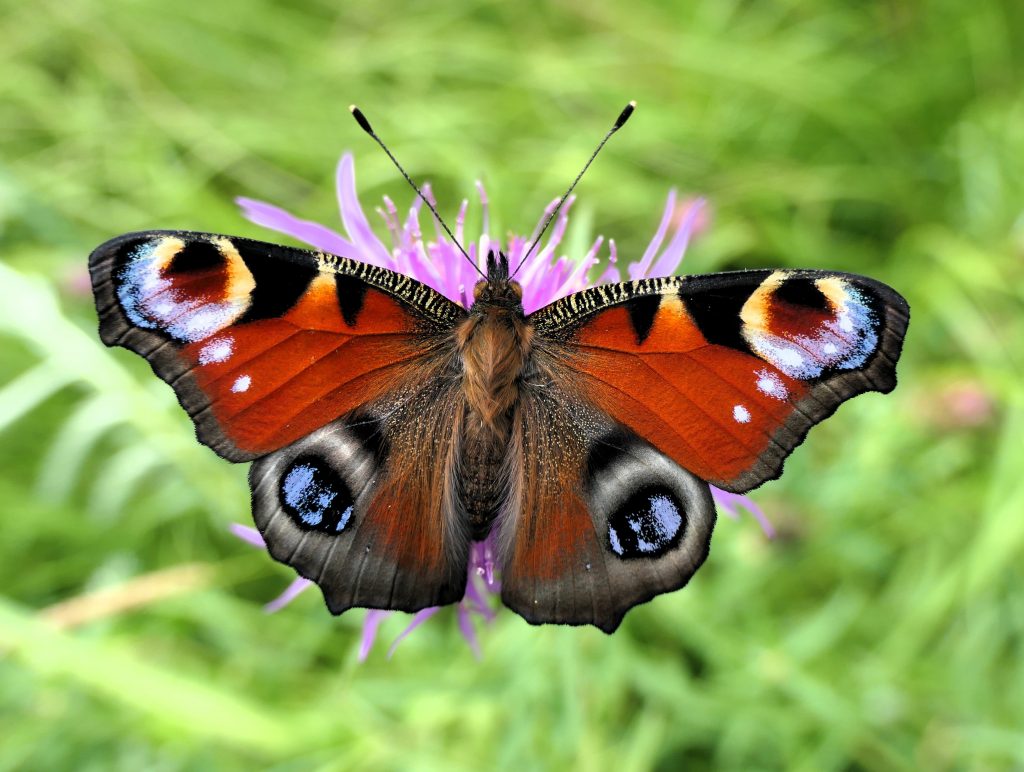
If you are doing Butterfly Conservation Ireland’s National Garden Butterfly Survey, keep a close eye on your garden. Mine is bursting with activity, making me reluctant to go out exploring. What better way to enjoy nature than on your doorstep?
The National Garden Butterfly Survey form is available here:
https://butterflyconservation.ie/wp/wp-content/uploads/2017/12/National-Garden-Butterfly-Survey.pdf
References
Harding, J and Mapplebeck, P. (2025) Silver-washed Fritillary (Argynnis paphia). Pp 90-91. In Harding & Lysaght (2025) An Atlas of Butterflies in Ireland 2010-2021. The National Biodiversity Data Centre. Waterford.
Judge, M and Lysaght, L.(2025) The Irish Butterfly Monitoring Scheme Newsletter, Issue 17. National Biodiversity Data Centre
Rippey, I. (2025) Purple Hairstreak (Favonius quercus). Pp 66-67. In Harding & Lysaght (2025) An Atlas of Butterflies in Ireland 2010-2021. The National Biodiversity Data Centre. Waterford.
